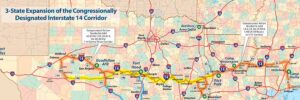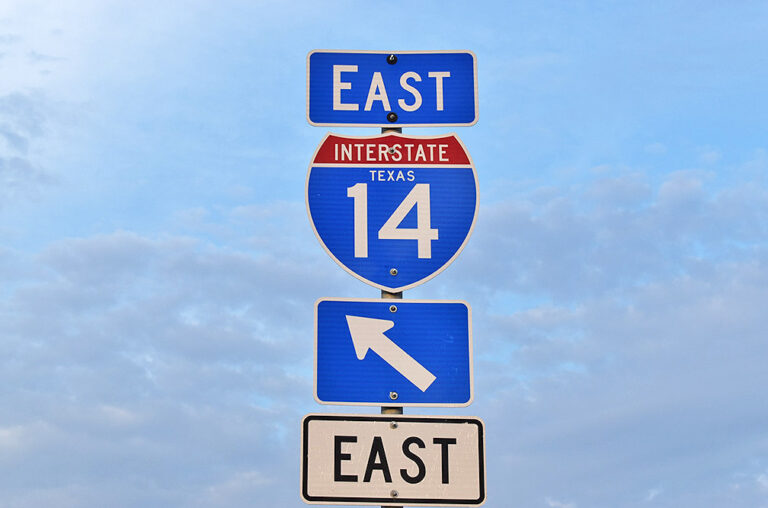
WASHINGTON — The proposed Interstate 14 corridor between west Texas and Mississippi will receive funding as part of the Build Back Better Plan’s infrastructure bill recently approved by Congress.
When finished, the interstate will run from Midland, Texas, to Gulf Port, Mississippi.
The legislation doesn’t note how much funding the project will receive, however.
The I-14 Central Texas Corridor, authorized in 2015, currently runs from West Texas to the Texas-Louisiana border generally following US 190, according to the Gulf Coast Strategic Highway Coalition.
The first 25-mile section of I-14 from Killeen and Fort Hood to I-35 at Belton was added to the Interstate Highway System in 2017.
The proposed legislation would create the Central Louisiana Corridor extending the I-14 corridor eastward following highways LA 8, LA 28 and US 84 in Louisiana through Leesville, Fort Polk, Alexandria, Pineville and Vidalia where it would cross the Mississippi River.
In Mississippi it would create the Central Mississippi Corridor following US 84 eastward from Natchez to Brookhaven and then to Laurel where it would terminate at Interstate 59. It includes a north-south interstate spur reaching south from Laurel to Gulfport generally following US 49 and passing near the gate at the Army’s Camp Shelby.
The Mississippi Transportation Commission has approved a resolution supporting the Future I-14 designation pointing to the potential for economic growth in south Mississippi.
In Texas the corridor would be expanded to the west so that it will serve San Angelo, Goodfellow Air Force Base, Midland-Odessa and the Permian Basin.
At Midland-Odessa the corridor will connect to Interstate 20 which runs westward to join with I-10 and leads to El Paso and Fort Bliss, completing the linkage between six military facilities across three states.
Spur routes in Texas would extend southward to provide better access to the strategic military seaports at Beaumont, Port Arthur and Corpus Christi.
This will enhance military readiness and efficiency as envisioned by President Dwight D. Eisenhower when he first commissioned America’s interstate highway system in 1956. The Permian Basin Spur would follow US 385 from I-20 at Odessa south to I-10. A second spur would follow US 83 and connect I-14 to I-10 at Junction.
Two more spurs would connect I-14 to I-10 at Beaumont, one on US 69 south from Woodville and the second on US 96 south from Jasper.
The Trucker News Staff produces engaging content for not only TheTrucker.com, but also The Trucker Newspaper, which has been serving the trucking industry for more than 30 years. With a focus on drivers, the Trucker News Staff aims to provide relevant, objective content pertaining to the trucking segment of the transportation industry. The Trucker News Staff is based in Little Rock, Arkansas.








